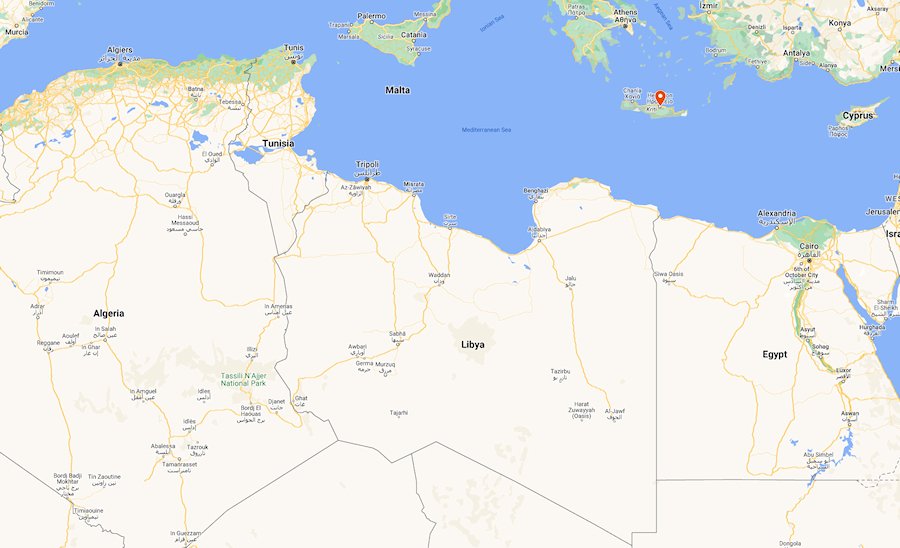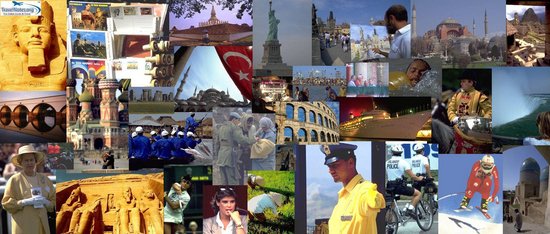Travel Notes: Africa - Libya Travel Notes.
Short URL: https://tnot.es/LY
Libya Travel and Tourism on Travel Notes
Beyond Borders - Discover Authentic Libya Travel Experiences
Escape the ordinary and explore the extraordinary in Libya's authentic cuisine, hospitable people, and centuries-old traditions along the coast of North Africa. Share on Facebook
About Libya
Although Libya is a fascinating country, it remains unsafe for travel due to a combination of factors such as crime, terrorism, civil unrest, and armed conflict.
Countries neighbouring Libya: Algeria, Tunisia, Egypt, Sudan, Chad and Niger.
 Add a Business -
Add a Location -
Add a Lodging - Add Travel Content
- Add URL
- Travel Services.
Add a Business -
Add a Location -
Add a Lodging - Add Travel Content
- Add URL
- Travel Services.
Mapping Libya
Map of Libya
Libya is a country located on the Mediterranean coast of North Africa bordered by Tunisia to the west, Algeria to the south-west, Niger and Chad to the south, Sudan to the south-east, and Egypt to the east.
The capital of Libya is Tripoli.
Libya Overview
Libya is one of the largest countries in Africa; and includes the former Italian colonies of Tripolitania, Cyrenaica, and Fezzan.
Brief History
Libya has a rich history dating back to ancient times.
It was once part of the Roman Empire and subsequently came under Arab and Ottoman rule.
In the 20th century, Libya was an Italian colony until gaining independence in 1951.
The country went through periods of monarchy, military rule, and dictatorship under Muammar Gaddafi, who ruled for over four decades.
In 2011, a civil war erupted, leading to the overthrow of Gaddafi's regime.
Economy
Libya's economy is primarily based on oil and gas exports, which account for a significant portion of its GDP and government revenue.
The country possesses substantial oil reserves, making it one of Africa's largest oil producers.
However, political instability and conflicts have heavily impacted Libya's economy in recent years.
Geography
Libya covers an area of approximately 1.8 million square kilometres, making it the fourth-largest country in Africa.
It has a diverse landscape, ranging from Mediterranean coastline and fertile plains to the vast Sahara Desert in the south.
Government
Libya has been experiencing political instability and is transitioning towards a more stable democracy.
The Government of National Unity was formed in 2021, aiming to unify the divided factions and pave the way for elections.
Languages
Arabic is the official language of Libya.
English and Italian are also spoken, especially in urban areas and among the educated population.
Natural Resources
Apart from its vast oil and gas reserves, Libya also has other natural resources, including gypsum, limestone, iron ore, and salt.
The country has a potential for tourism, with its historical sites and natural landscapes, although the industry has been impacted by the conflict.
Society and Culture
Libya is home to diverse ethnic groups, with the majority being Arab-Berbers.
Islam is the dominant religion, with Sunni Muslims comprising the majority of the population.
Libyan culture is influenced by Arab, Berber, and Mediterranean traditions.
Traditional music, art, and cuisine are integral parts of Libya's cultural heritage.
Tourism
Libya's historical sites, such as the ancient Roman cities of Leptis Magna and Sabratha, attract tourists interested in archaeology and history.
The Sahara Desert offers opportunities for desert tourism and adventure activities.
Tourism has significantly declined in recent years though, due to security concerns and political instability in Libya.
It's important to note that the situation in Libya is subject to change, and the country is currently going through a transitional phase. Therefore, it is advisable to consult up-to-date sources or travel advisories before planning a visit to Libya.
Visiting Libya
Since Gaddafi's fall, Libya has experienced significant political instability and conflict.
Various factions and armed groups have vied for power, leading to a complex and fluid political landscape.
It is important to note that the security situation in Libya can be volatile, and travel advisories from respective governments should be consulted before considering a visit.
If you are planning to visit Libya, it is essential to research and stay updated on the current security situation.
Around Libya
Much of the country is barren, and most of the population live along the shore of the Mediterranean.
The road from Tripoli runs west along the coast to Tunis, in Tunisia, and east through Benghazi and Tobruq; to Alexandria, in Egypt.
Another road leads south to Sabha in the interior.
Oases in the desert include al-Kufrah and al-Jaghbub.
Libya Travel Tips
Libya may at first seem a daunting place to visit, but as two western women we have found minimal hassle (compared to other north African countries it is blissfully easy to walk around), and a very friendly people willing to offer you assistance and hospitality at every turn.
We advise that you find yourself a reputable tour company as it is still very difficult to travel in Libya independently.
Whilst the visa situation is currently quite a drag - it is set to become easier soon we hear.
In terms of places to visit - there is just so much. Desert enthusiasts will find dramatic scenery and fascinating rock art. Archaeology buffs will love Libya's ancient cities and there is a beautiful coastline, desert towns and Berber architecture to enjoy as well.
Hotels can be a bit down-trodden and it can be difficult to ensure a booking, but the situation has much improved over recent years.
Tripoli
Map of Tripoli
On independence in 1951, Tripoli (Tarabulus al-Gharb, in Arabic) shared capital status with Benghazi. The larger of the two cities, Tripoli, was declared the sole capital in the early 1970s.
Tripoli was probably founded by the Phoenicians, as Oea, in the 7th century BC.
It became an Arab stronghold in AD 645, then a part of the Ottoman Empire in 1551.
For centuries the Muslim corsairs of North Africa attacked the ships of Christian nations or demanded a payment for safe passage.
In 1801, the United States refused to pay the increased tariff demanded by the pasha of Tripoli, so the Tripolitans began seizing American ships.
A US naval squadron was sent to blockade the port of Tripoli, but the US frigate Philadelphia was seized in February 1804.
A small group of daring Americans raided the port at night and burnt the vessel to prevent the corsairs from using it against them.
Tripoli Sightseeing
The Roman triumphal arch, in Tripoli, erected in honour of Emperor Marcus Aurelius, dates from the 2nd century.
Also visit the 16th century Spanish fortress; and the Karamanli and Gurgi mosques.
Benghazi
The second largest city in Libya was the site of the ancient Greek colony, Hesperides.
The Turks controlled Benghazi from the mid 16th century until 1911, when it was captured by the Italians during the Turko-Italian War.
The British occupied the city during the Second World War, and it served as the seat of British territorial administration until Libya gained independence in 1951.
Libya Tours
Adventures of Libya
An increasing number of travellers get to see the Libya's stunning nature; wild mountains, fragile green spots of forests and oases, and the orange coloured desert.
Libya Maps and Travel Guides
Libya Travel Guides - Libya Maps.
Weather in Africa:
Local weather forecasts for destinations around Africa.
|
|
More From Travel Notes
Travel Notes Online Guide to Travel
Africa - Asia - Caribbean - Europe - Middle East - North America - Oceania - South America.
The Travel Notes Online Guide to Travel helps visitors plan their trip with country and city travel guides, local tourist information, reviewed web sites, and inspiring travel content.
Travel and Tourism Guides on Travel Notes
 If you find Travel Notes useful, please take a moment to
like us on Facebook and share with your friends on social media.
If you find Travel Notes useful, please take a moment to
like us on Facebook and share with your friends on social media.
Share on Facebook
Travel Resources
.
Travel & Tourism With Industry Professionals.














